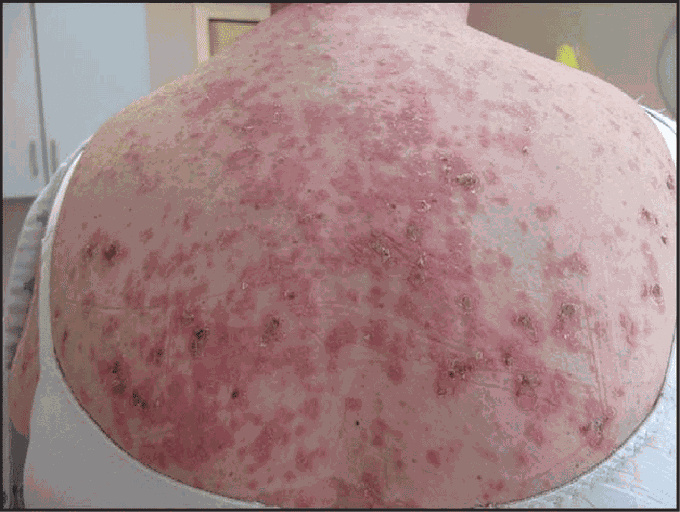


CUTANEOUS LUPUS ERYTHEMATOSUS (CLE)
Cutaneous lupus erythematosus (CLE) is lupus affecting the skin. In this autoimmune disease, the body’s immune system attacks healthy skin. There are 3 main types: 1) Acute cutaneous lupus (“acute skin lupus”); (2) Subacute cutaneous lupus (“subacute lupus”); and (3) Chronic cutaneous lupus (“discoid lupus”). All patients with skin lupus need to be monitored for disease inside of the body, which can affect the joints, kidneys, lungs, and other organs. Acute skin lupus almost always involves more than just the skin, whereas both subacute and discoid lupus often occur only in the skin. This is important because while all patients with skin lupus need to be monitored, many patients with either subacute lupus or discoid lupus go through life without significant disease inside their bodies. Lupus most often appears between the ages of 20 and 50 years; it affects women more than men; and it may happen more in patients with a family history of lupus or other autoimmune diseases. Symptoms Each type of skin lupus can be triggered and worsened by sunlight. Acute skin lupus most often involves a prominent rash on the cheeks and nose (“butterfly rash”). Subacute lupus most often presents with a red, raised, scaly rash on sun-exposed areas of the body. It tends to have circular skin lesions or lesions that can look like psoriasis on sun-exposed skin. Discoid lupus starts out as a red to purple scaly rash on the scalp, face, ears, and other sun-exposed areas. Over time, discoid lupus may heal with discolored scarring and even hair loss when the scalp is involved. Sometimes patients may feel pain or itch.
Living with Lupus is often a battle not just against the illness itself, but also against the emotional weight of uncertainty, fatigue, and the toll of long-term medications. For one courageous woman, that battle began in 2013. Diagnosed after Lupus had already affected her joints and internal organs, she was quickly placed on medication that initially helped. But as time went on, her health declined again this time with more frequent flare-ups and increasingly difficult side effects. Like many others with chronic illness, she faced the crushing weight of hopelessness. Each day became harder than the last, and conventional treatments no longer offered the comfort they once did. But in March 2020, at her lowest point, she made a decision that changed everything.Out of desperation and with a healthy dose of skepticism she turned to NaturePath Herbal Clinic, hoping their natural Lupus treatment might offer at least some relief. What happened next went far beyond her expectations.After completing a six-month herbal program, her flare-ups stopped entirely. Her energy returned. The chronic pain that had defined her daily life began to fade. For the first time in years, she felt like herself again. Not just alive but truly living.Her story is not just one of healing; it’s one of resilience, open-mindedness, and the courage to try something new when all else fails. By sharing her journey, she hopes to offer something priceless to others living with Lupus: hope.This treatment has been a true breakthrough for her. If you’re searching for a safe, natural, and effective alternative, I genuinely recommend giving this a chance.”www.naturepathherbalclinic.com or email them at info@naturepathherbalclinic.com


